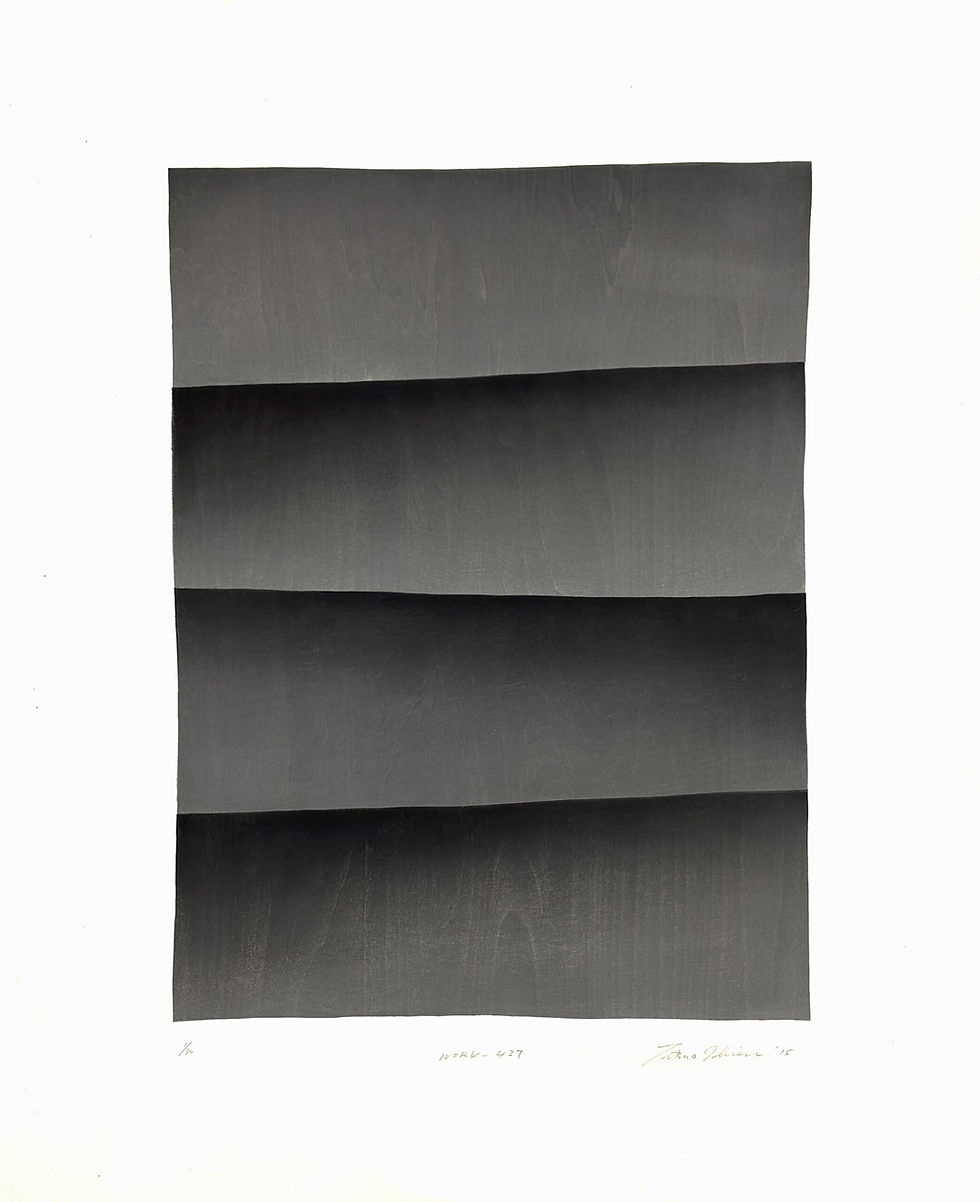Collecting For Beginners
- hilarytolman
.jpg/v1/fill/w_320,h_320/file.jpg)
- Jun 5, 2020
- 4 min read
Updated: Sep 5, 2020

A few years ago I was approached at my booth at one of the art fairs in which I participate by an apologetic colleague of my sister's who, looking around at the art that I had on the walls, shared with me that he had just bought a painting of elephants and that he didn’t really understand the art that I show.
This led to a conversation about art snobbery, collecting, and the unfortunate presumption of elitism that surrounds the acquisition of art. To be clear, my position was that if he liked the elephants then he should have them, and that for me, art acquisition starts with a visceral reaction to something (“I must have this because I love it”), not with a view towards return on investment. (Though I am of course very aware of those clients who buy art from me from that standpoint, and to those who are considering it, I can only say “Shinoda, Shinoda, Shinoda”).
Our conversation led me to think about collecting, and the advice that I could share with people who are just starting out. Is there an art to collecting, or are collections just a hodge-podge of assorted things that people have purchased and then labeled by how they fit together? What actually makes a collection?
In my opinion, an art collection is a grouping of unrelated art pieces that come together because the collector had a clear point of view. In the case of the above-mentioned gentleman, perhaps his collection has developed around the theme of elephants and he now has a wonderfully cohesive collection of representational animal art. Perhaps your focus will be on a particular technique, or art made by women and/or minority artists. Perhaps you only respond to monochromatic art. Will you focus on abstract or representational themes?
I am not sure that anyone starts out deciding that they will build a collection. I think that one buys a piece of art that one loves, and thus it all begins. The important thing is to educate yourself about the piece of art that you are buying, the artist who made it, and the technique used. You need to take the piece home, study it, understand what about it made you respond and love it, and all that will lead you to your next acquisition which you will still purchase because you love it but with a more discriminating eye.
One acquisition will lead to another, you will have two pieces, then suddenly three, and then will come the “aha” moment where you will realize what your focus will be and that you have become a collector. Take your time, buy what you love, but deliberately and discerningly. Collecting art will be a lifelong process so look, research, educate yourself before buying. Buy what you love and what interests you. A collection is not an impersonal thing, but an assemblage of artwork that resonated with you, and that can change over time.
You don’t have to be rich to build a collection, especially of great contemporary art; an arena where bargains can still occasionally be found. If you look at prices online or at art fairs or auction houses, works on paper are still underpriced. I feel that the work that I handle is very reasonable considering the artists’ technical brilliance, innovative vision, reputation, and award-winning status at juried art competitions around the world, and the very limited-edition sizes of their work. Emerging artists are obviously going to be less expensive than established ones. Always buy the very best that you can afford. Keep in mind that a fantastic piece by an unknown artist will bring you more gratification down the line than a third-rate piece by someone well-known.
Though I mentioned above that I believe that true art collectors buy from passion, not for investment purposes, art is still an asset. Take care of it. Have it framed by an expert (more on that in a later post), store it properly out of direct sunlight, insure it if you can to avoid the risk of potential damage or loss. Maintain it.
Keep in mind that a collection is never static; it is a living thing, perhaps a strange thing to say about an assortment of inanimate objects. By this I mean that your tastes may change, you may grow to dislike a piece that you once loved, or simply outgrow it as your interests change. Don’t be afraid to weed out as much as you add in. Local art schools will be thrilled to have donated artwork that can be used as teaching tools for the students. Always look at your collection with a critical eye and keep it current with the needs and likes of the present day you.
Do your homework, seek out gallery owners and art experts (most of whom will be delighted to speak at length about the art and artists that they represent, buy what you respond to without following trends, and one day – sooner than you think – you will be sitting on your couch looking at an art collection that has become important, both emotionally and financially.


